
SIGHTSEEING
[Kamogawa River, Kawadoko]
(9 min walk from the hotel)
The Kamogawa River, which is approximately 31 kilometers long, has long been a favorite of the citizens of Kyoto.
The riverbanks have been crowded with entertainments and peddlers since the Edo period, when merchants set up seats on the riverbanks, which is said to have been the origin of kawadoko.
Today, the "Kamogawa River Noryo-yuka" is a summer tradition in Kyoto, and is divided into four areas: the Kamikiya-machi, the Ponto-cho, the Saiseki, and the Shimokiya-machi, lined with stores of various genres, including Japanese, Western, and Chinese food.
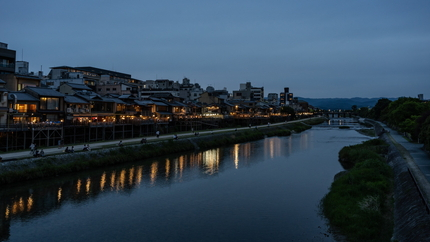
[Gion Festival]
The festival is said to have a history of more than 1,000 years, beginning as a way to quell an epidemic, and a variety of Shinto rituals are held from July 1 to 31, with the "Yamaboko event of the Kyoto Gion Festival" registered as an intangible cultural heritage by UNESCO. The most impressive feature of the festival is the Yamaboko Junko (Yamahoko procession), a procession of colorfully decorated floats.
During Yoiyama, the entire town is filled with a lively atmosphere with stalls and food stands.
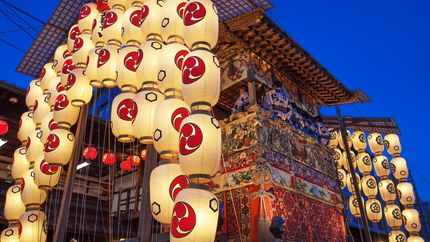
[Gion Higashiyama](15 min walk from the hotel)
Gion Higashiyama, where the standard Kyoto areas such as Ninen-zaka and Sannen-zaka slopes from Kiyomizu Temple, Hanami-koji with its teahouses, and Yasaka Shrine are concentrated, are home to many traditional buildings and cultural assets that give the area a distinctly Kyoto flavor.
With restaurants and souvenir shops lining the street, it is an ideal place for strolling.
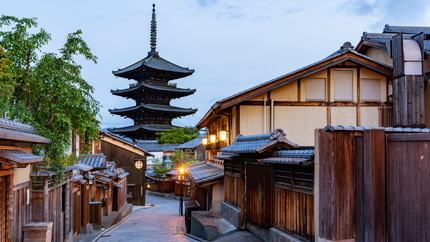
[Nishiki Market](5 min walk from the hotel)
Known as "Kyoto's kitchen" for its fresh, seasonal produce, Nishiki Market is said to have a history of over 400 years, and in 1993 a new 390-meter-long arcade was completed, allowing visitors to enjoy a pleasant stroll even on rainy days.
In Nishiki Market, including the shutters of the stores, there are paintings by Jakuchu Ito, the "artist of strange ideas," which have become increasingly popular both in Japan and abroad in recent years.
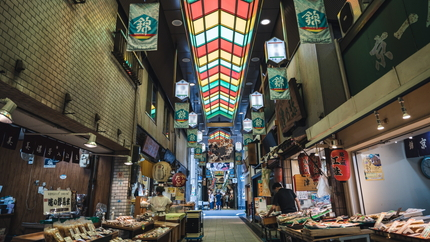
[Kyoto Imperial Palace](20 min walk from the hotel)
With a history dating back to the Heian period, it served as the residence of the emperor for about 500 years beginning in 1331.
The Imperial Palace includes Shishin-den, Seiryau-den, Kogosho, Ogakumon-sho, and Otsune-goten, where visitors can experience the history and culture of Japan's imperial family. In the Gosho-Gyoen, visitors can enjoy seasonal flowers, and in spring, the Demizu cherry blossoms and Kuruma-kaeshi cherry blossoms are especially famous.
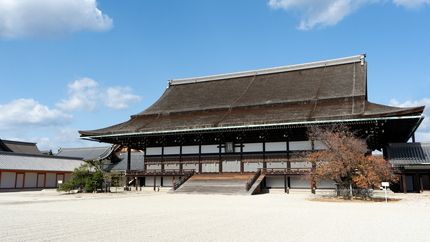
[Kyoto International Conference Center]
(16 min by subway from the hotel)
The Kyoto International Conference Center, located next to Takaragaike Park, was Japan's first national conference facility and opened in 1966.
It was created based on the concept of "people gathering in nature to talk". It is a popular facility used for academic conferences, international meetings, and as a filming location for dramas and movies. Although surrounded by nature, it is conveniently located for transportation, and has a restaurant and café inside the building.
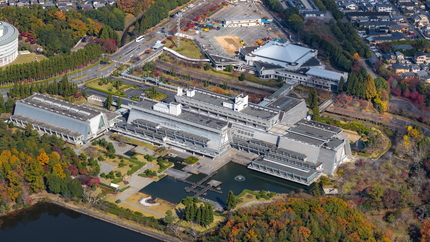
[Teramachi Kyogoku Shopping Street]
(3 min walk from the hotel)
Teramachi-street was originally the easternmost street of the capital and was known as "Higashino-kyogoku-ohji. It is said that Hideyoshi Toyotomi gathered temples in 1590, giving birth to the current name of the street, "Teramachi-street".
Today, there are approximately 180 stores of all sizes, ranging from long-established establishments to trendy stores, making it a popular shopping area for people of all ages. Visitors can stroll comfortably under the arcade even in the rain.
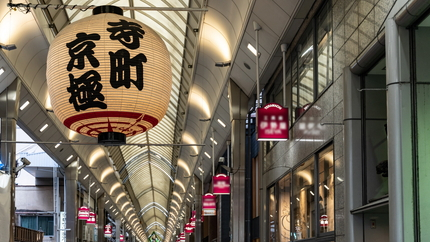
[Ponto-cho](7 min walk from the hotel)
Ponto-cho, an entertainment district between the Kamogawa River and Kiyamachi Street and one of the five hanamachi of Kyoto, is crowded until nighttime with numerous restaurants, including teahouses, ryotei, restaurants, and bars.
On both sides of the long, narrow stone-paved alley are rows of narrow-fronted machiya houses, also called " Unagi-no-Nedoko (bed for eel : long,narrow house)," and the lights of the lanterns give this spot a distinctly Kyoto flavor.
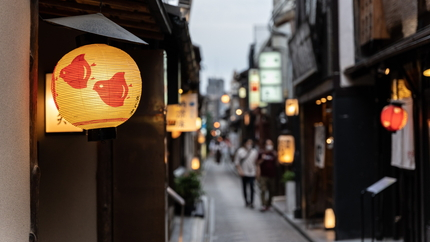
![HOTEL VISTA PREMIO KYOTO KAWARAMACHI ST. [Official] | Sightseeing](https://www.hotel-vista.jp/admin/img/upload/66d00bef-1be8-416d-ab7c-496ca42e762b.png)

![HOTEL VISTA PREMIO KYOTO KAWARAMACHI ST. [Official] | Sightseeing](https://www.hotel-vista.jp/admin/img/upload/66da96c1-7544-45b1-9dc4-6acfa42e762b.png)